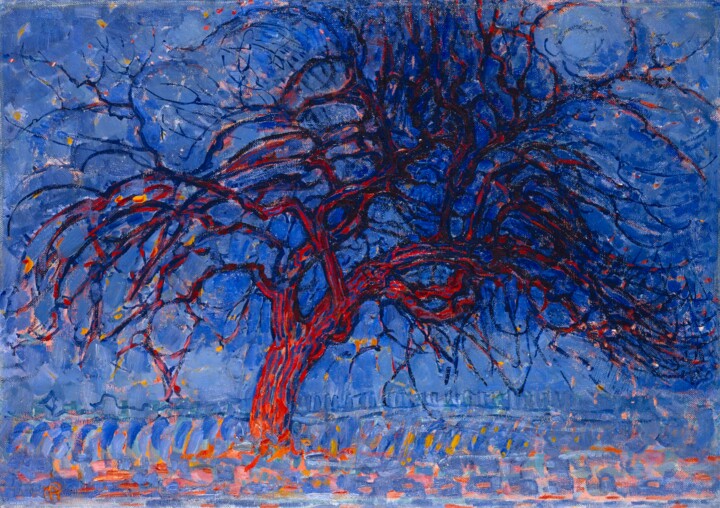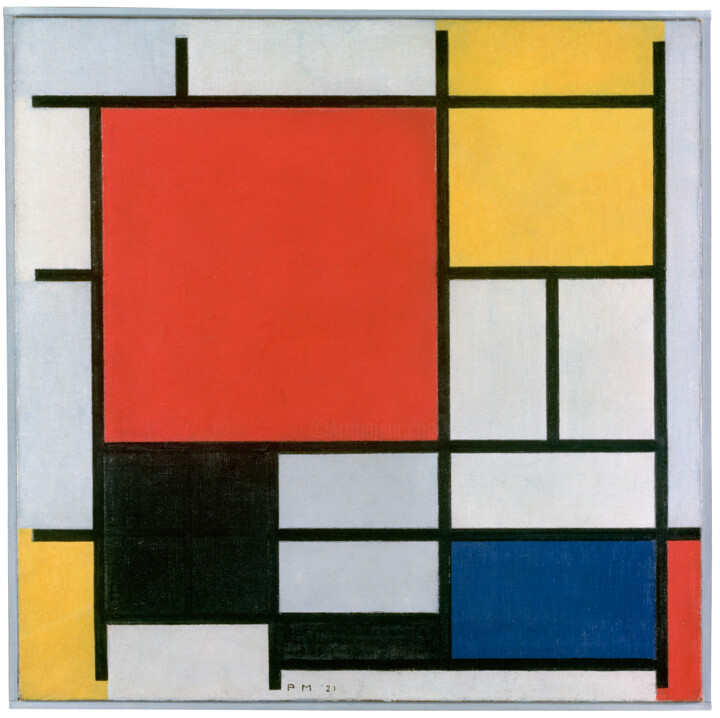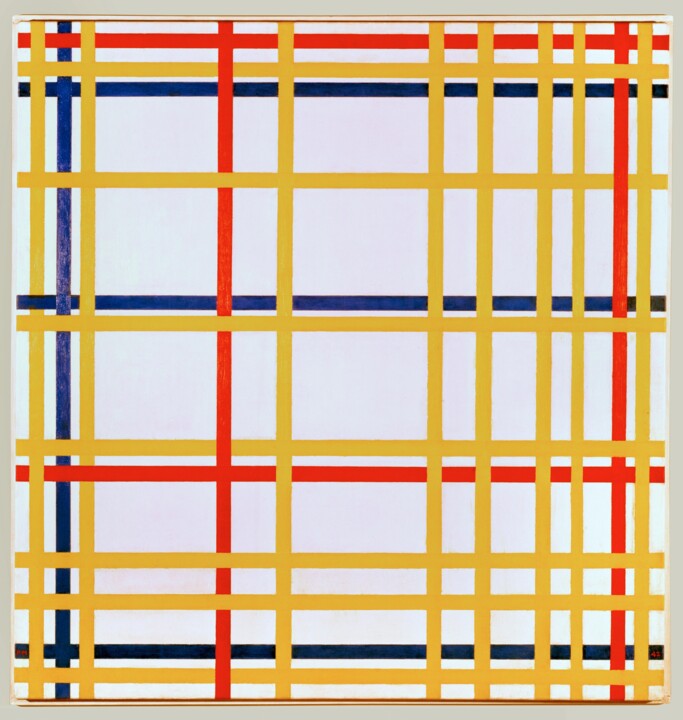
Piet Mondrian, a Dutch painter, is renowned for his pioneering role in non-representational visual expression. His oeuvre is marked by a reduction in both form and hue, focusing on linear constructs, geometric figures, and foundational colors. Piet's unique approach and artistic ideology have positioned him as a pivotal figure in contemporary visual expression, influencing numerous creators and movements.
Piet Mondrian: A Journey Through the Evolution of Contemporary Visual Expression
Piet Mondrian, born on March 7, 1872, in Amersfoort, Netherlands, was influenced early on by his father, a drawing instructor, and his artist uncle, which inspired his formal training at the Academy of Fine Art in Amsterdam. Initially rooted in Dutch landscape traditions, Mondrian's art underwent a transformative shift upon moving to Paris in 1912, where he encountered Cubism and began exploring geometric abstraction.
His Parisian phase marked the genesis of Mondrian's characteristic style, gradually moving away from figurative art towards complete non-representation. His compositions focused on precise angles, horizontal and vertical lines, and elemental hues, reflecting a quest for a universally comprehensible aesthetic and influenced by his philosophical interest in theosophy.
Mondrian's artistic journey continued in London in 1938 and later in New York from 1940, where he found renewed inspiration in the city's dynamic atmosphere and abstract art scene. His iconic work, "Broadway Boogie Woogie," exemplifies this period, featuring intricate grid structures that capture the energy of urban life.
He remained active in New York until his passing on February 1, 1944, leaving a lasting legacy on modern art through his innovative approach to abstraction and profound influence on subsequent artists and movements. Mondrian's trajectory from serene Dutch landscapes to the vibrant streets of New York epitomizes the evolution of contemporary visual expression.
The Artistic Vision of Piet Mondrian: De Stijl and Neoplasticism
Master's legacy is closely tied to the De Stijl movement, co-founded with Theo van Doesburg in 1917. This groundbreaking endeavor aimed to simplify art by focusing on essential elements of form and hue, reacting against the chaotic early 20th century. Emphasizing geometric shapes like rectangles and squares, paired with primary tints and neutral tones, De Stijl sought to convey universal harmony and underlying truths.
Pietn's mature style, known as "neoplasticism" or "De Nieuwe Beelding," exemplified these principles. His artworks featured intersecting black lines forming balanced grids, filled with primary tints and neutrals. Vertical lines symbolized dynamic aspects of existence, while horizontals represented stability. Despite their geometric rigor, master's compositions conveyed dynamic energy through color and balance, aiming to transcend the visible world and express spiritual truths.
Beyond painting, painters's influence extended to architecture, design, and music, inspiring movements like Bauhaus and modernist aesthetics. His commitment to abstraction and universal harmony reshaped artistic expression, establishing a lasting impact on global art and design practices.
Celebrated Masterpieces
Piet’s body of work includes several iconic pieces that have solidified his legacy as a pioneer of non-representational expression. His dedication to clarity, geometric precision, and the application of fundamental shades is evident in his most revered pieces. Here's a closer examination of some of his renowned creations:
Broadway Boogie Woogie (1942-43)
- Inspired by the energetic pace of New York, this piece uses small rectangles to mimic the town's streets and jazz music rhythms.
Victory Boogie Woogie (1944)
- An unfinished work that continues the theme of Broadway Boogie Woogie, reflecting Mondrian's fascination with the vitality of New York.
Tableau I (1921)
- An early example of his geometric abstraction, showcasing the balance between form and hues.
Composition A (1923)
- Features a grid structure with various rectangles of shades, creating a rhythmic pattern.
Composition with Large Red Plane, Yellow, Black, Gray, and Blue (1921)
- A powerful example of master's use of tints and form to create dynamic equilibrium.
Composition with Grid 8 (1919)
- Utilizes a grid with fewer colors, emphasizing the structure and minimalism of his style.
Composition with Red, Black, Blue, and Yellow (1928)
- Reflects Mondrian's mature style, with a strong focus on tints and a grid system.
Composition No. III (1929)
- Another key piece in painter's exploration of shades and geometric abstraction.
Tableau I: Lozenge with Four Lines and Gray (1926)
- Unique for its diamond-shaped canvas, this piece emphasizes simplicity and balance.
Composition with Red, Yellow, and Blue (1935)
- A later artwork that continues Piet's iconic style of grid lines and tints.
Composition with Red (1939)
- Focuses primarily on the red within the grid structure, highlighting its dominance and energy.
Tableau No. 2 (1913)
- An early abstract masterpiece, showing Piet's transition from figurative to non-representational art.
Gray Tree (1911)
- One of his early works, showcasing his move towards abstraction while still depicting a recognizable tree form.
Pier and Ocean (1915)
- Reflects the transition from representational to abstract art, with a series of lines and curves evoking a seascape.
The Red Tree (1908-10)
- An example of his early Fauvist influence, featuring expressive use of color and form before his move to pure abstraction.
Decoding Mondrian: An In-Depth Analysis of His Artworks
 COMPOSITION AVEC UN GRAND PLAN ROUGE, JAUNE, NOIR, GRIS (1921) Print of the painting by Piet Mondrian
COMPOSITION AVEC UN GRAND PLAN ROUGE, JAUNE, NOIR, GRIS (1921) Print of the painting by Piet Mondrian
Description of "Composition with Large Red Plane, Yellow, Black, Gray, and Blue" (1921) by Piet Mondrian
"Composition with Large Red Plane, Yellow, Black, Gray, and Blue," painted by Piet Mondrian in 1921, exemplifies his abstract style and approach. This oil on canvas features a grid of intersecting lines that organize the space into rectangles and squares of various sizes and shades.
Central to the composition is a bold red shape that commands attention, balanced by smaller vibrant blocks: a yellow square in the upper right corner, a deep blue form near the lower edge, and areas of black and gray for contrast. The predominantly white background accentuates these primary colors, enhancing the visual impact against the intersecting lines.
Mondrian's work here embodies his quest for pure expression beyond literal representation, using primary and neutral tones to convey a minimalist yet emotionally profound visual language. The careful placement and balance of each element illustrate Mondrian's commitment to achieving harmony and order through his art.
"Composition with Large Red Plane, Yellow, Black, Gray, and Blue" stands as a testament to Mondrian's vision of reducing art to essential elements, focusing on shape and tint interplay to evoke a universal sense of beauty and emotion.
NEW YORK CITY (1942) Print of the painting by Piet Mondrian
"New York City" (1942) by Piet Mondrian
The masterpiece painted by Piet Mondrian in 1942, exemplifies the evolution of his abstract style, influenced by the vibrancy and energy of urban life. This oil on canvas piece showcases a complex mesh of intersecting lines that create a dynamic network reminiscent of bustling city streets and avenues.
Unlike Mondrian’s earlier works characterized by a balanced grid, the painting presents a more dynamic and unpredictable composition. Primary hues—red, blue, and yellow—alongside black, accentuate certain lines. These shades are applied directly onto the lines themselves, giving them the appearance of neon lights or advertising signs.
The background, pure white, makes the vibrant lines stand out and contributes to the overall impression of movement and energy. This effect mirrors the lively atmosphere of the city, with its flashing lights and vertical architecture.
The masterpiece is representative of Mondrian's later period, during which he integrated influences from American culture, particularly jazz. The improvisational nature of jazz inspired Mondrian to adopt a freer and more spontaneous approach to his abstract art.
The painting captures the essence of Mondrian’s adaptation to the dynamic urban environment, conveying its spirit through a vibrant interplay of shapes and dyes. This work not only exemplifies Mondrian’s mature style but also his ability to evolve and infuse his art with contemporary vitality.
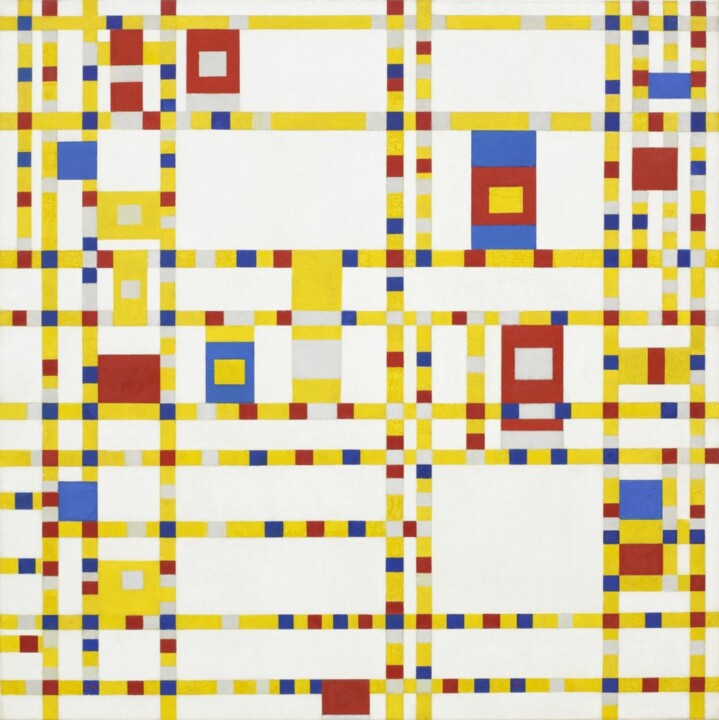 BROADWAY BOOGIE WOOGIE (1943) Print of the painting by Piet Mondrian
BROADWAY BOOGIE WOOGIE (1943) Print of the painting by Piet Mondrian
"Broadway Boogie Woogie" by Piet Mondrian
The oil on canvas painting by Piet Mondrian, stands as one of his last and most iconic works. This piece represents a departure from the distinct lines of his earlier compositions, embracing instead a grid composed of colored shapes that appear to vibrate with the energy of the music and the town that inspired it. The painting directly reflects the rhythm and vitality of music and the bustling activity of Broadway, one of the city's liveliest avenues.
The artwork features an irregular grid of yellow rectangles, blue and red squares, and white spaces. These shapes are arranged in horizontal and vertical blocks, creating a sense of movement and frenetic activity. The yellow rectangles evoke the city's twinkling lights, while the red and blue squares represent the movement of cars and people. The white spaces could be interpreted as the city's open areas—the sky, distant buildings, or empty spaces on a map.
The small colored shapes resemble musical notes on a staff, organized to guide the viewer's eye from one shape to another, creating a dynamic visual experience that mirrors the energy and rhythm. Shade is used not only for its aesthetic value but also to symbolize the vibrancy and harmony of urban life.
Mondrian's Legacy: Exhibitions and the Art Market
Piet Mondrian’s distinctive style and innovative approach to abstraction have garnered him recognition in major museums and galleries worldwide. His works are prominently featured in prestigious institutions such as the Museum of Modern Art (MoMA) in New York, Tate Modern in London, and Kunstmuseum Den Haag, which houses the largest collection of his art. Mondrian's influence on abstract art and the De Stijl movement is highlighted through numerous exhibitions in these institutions.
Mondrian’s paintings are highly sought after in the art market, often fetching substantial sums at auction. Noteworthy sales include "Composition No. III, with Red, Blue, Yellow, and Black," which sold for $50.6 million at Sotheby’s in 2015. His use of primary colors and geometric shapes continues to impact various fields, including design, architecture, and fashion, solidifying his status as a cornerstone of contemporary art.
The Ripple Effect: Artists Inspired by Piet Mondrian
Piet Mondrian's pioneering vision of abstraction and his innovative use of form and hue have left an enduring impression on the art world. His influence extends beyond his own body of work, inspiring a diverse array of artists across different movements and mediums. Here are some prominent artists who have drawn inspiration from Mondrian’s groundbreaking approach to visual expression.
Yves Klein, a French artist recognized for his monochromatic works and the creation of International Klein Blue (IKB), was deeply influenced by Mondrian’s use of pure tint. Klein's exploration of shade as an independent entity can be traced back to Mondrian's reduction of his palette to fundamental colors. Klein took this concept further by focusing solely on the dye blue, which he believed possessed spiritual and infinite qualities. Mondrian’s abstraction and his belief in the potency of pigment as a universal language resonate in Klein’s body of work, particularly in his monochrome paintings and performances.
Ellsworth Kelly, an American painter and sculptor, is another artist whose minimalist approach reflects Mondrian's influence. Kelly's use of pigment fields and geometric forms draws directly from Mondrian’s neoplasticism. His artworks, characterized by bold, unmodulated hues and simple shapes, echo Mondrian’s commitment to simplicity and abstraction. Kelly’s work emphasizes the interaction between shape, tint, and space, much like Mondrian's exploration of these elements within a grid structure. Kelly often emphasizes the purity of dye and form, creating a visual experience that is both direct and profound.
Agnes Martin, known for her serene and meditative grid-based paintings, was profoundly influenced by Mondrian’s emphasis on simplicity and order. Martin’s work, often composed of delicate lines and subtle shade fields, captures a sense of tranquility and balance reminiscent of Mondrian’s compositions. Her dedication to minimalism and abstraction reflects Mondrian's philosophy of reducing art to its essential elements. Martin’s grids, though more subdued and introspective, share Mondrian’s belief in the power of structure and geometry to convey deeper truths and evoke emotional responses.
Other Influences
- Bridget Riley, an English painter renowned for her Op Art works, was influenced by Mondrian’s precision and his use of geometric patterns. Her black and white compositions, which create optical illusions of movement and depth, reflect Mondrian's exploration of line and form.
- Victor Vasarely, often regarded as the father of Op Art, drew inspiration from Mondrian’s neoplasticism in his geometric abstract works. His use of optical effects and vibrant tint contrasts can be viewed as an evolution of Mondrian’s geometric abstraction.
- Donald Judd, a leading figure in Minimalist art, emphasizes simplicity and the use of industrial materials, echoing Mondrian’s pursuit of purity in art. Judd’s sculptures and installations reflect the clean lines and clear structures that Mondrian championed.
Piet’s contribution to art extends far beyond his iconic grid paintings. He revolutionized the art world with his innovative approach and his quest for universal harmony. Mondrian’s legacy lives on through his timeless works, his influence on other masters, and his profound impact on the evolution of modern art. His dedication to simplicity, order, and purity in art continues to inspire and captivate audiences worldwide.

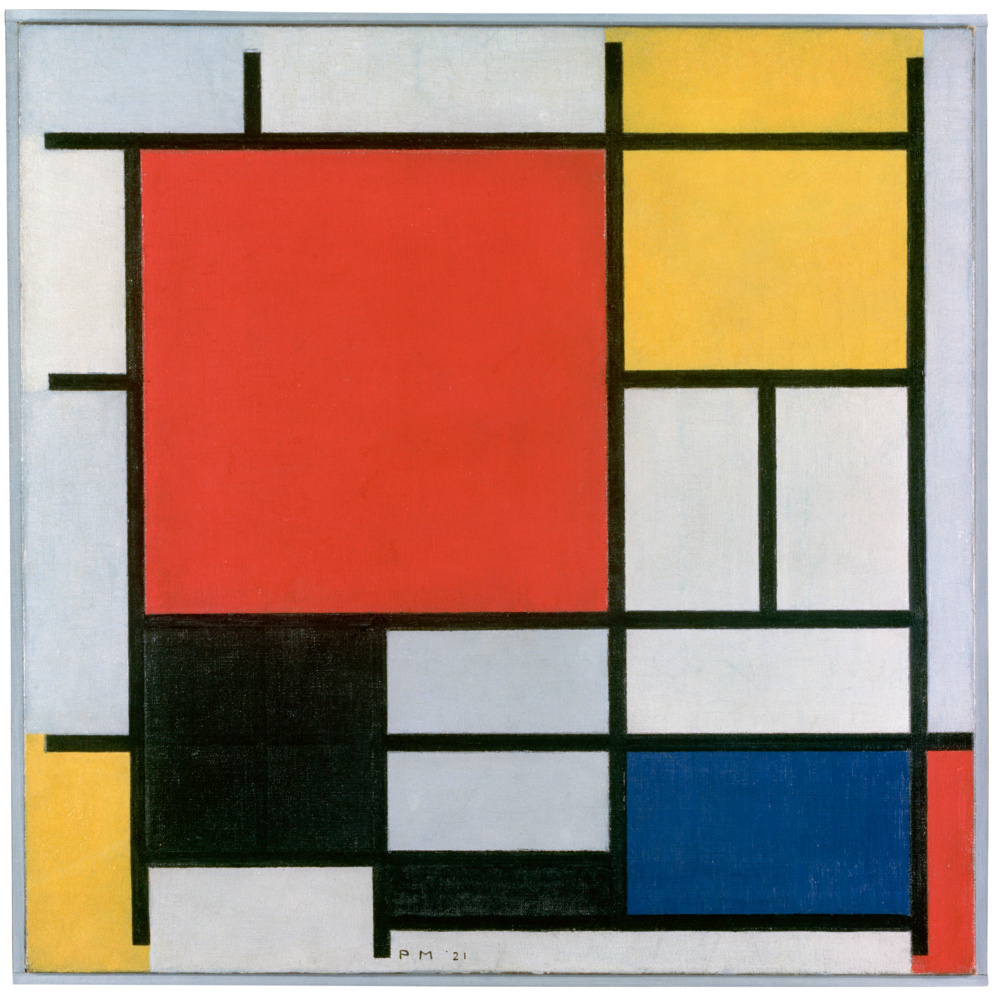
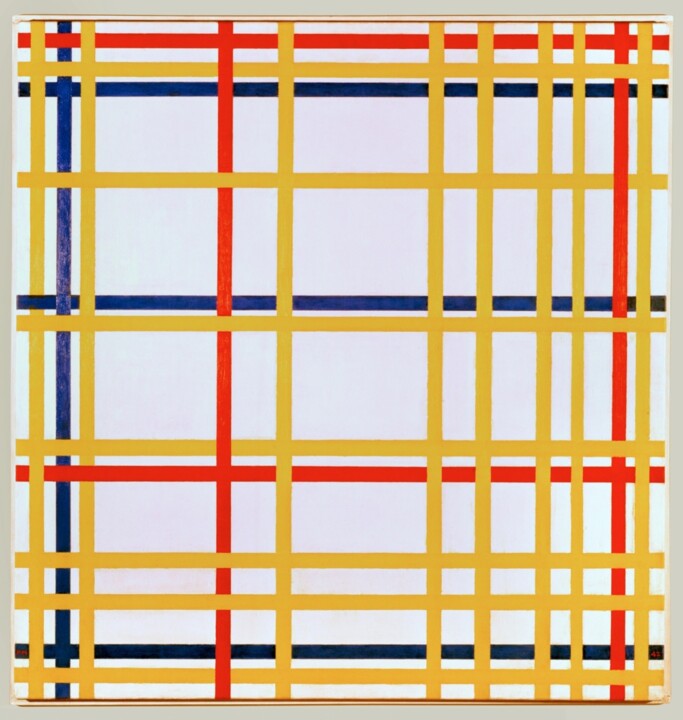
 Selena Mattei
Selena Mattei

